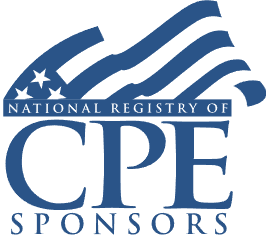Tax Reporting of Business Startup and Expansion Costs: Deduction and Amortization Rules
Navigating Sections 195, 162 and 263(a) on Qualified Startup Expenses

Welcome! Strafford is now BARBRI! The expert courses you know from the trusted global leader in legal education.
Course Details
- smart_display Format
On-Demand
- signal_cellular_alt Difficulty Level
Intermediate
- work Practice Area
Corporate Tax
- event Date
Tuesday, November 14, 2017
- schedule Time
1:00 PM E.T.
- timer Program Length
110 minutes
-
BARBRI is a NASBA CPE sponsor and this 110-minute webinar is accredited for 2.0 CPE credits.
-
BARBRI is an IRS-approved continuing education provider offering certified courses for Enrolled Agents (EA) and Tax Return Preparers (RTRP).
This course will provide corporate tax advisers with a practical guide to the proper tax treatment of business startup and expansion costs. The panel will detail startup and expansion costs that are deductible in the year of expenditure, describe the amortization rules for expenses over allowable thresholds, and discuss book-tax differences in handling startup and expansion costs.
Faculty
Description
Determining the proper tax treatment of business startup costs presents a hurdle for many corporate tax advisers and compliance professionals. While the statutory language is relatively clear in allowing companies to take a current deduction of up to $5,000 subject to limitations, identifying expenses that are potentially deductible is difficult.
Section 195 allows taxpayers to deduct a portion of qualified startup costs, defined as either investigatory or pre-opening expenses. If startup costs exceed $50,000, then deductibility is phased out and reduced. The Code requires companies to amortize remaining startup costs over a period of 180 months.
Only costs deductible under Section 162 as ordinary and necessary business expenses are eligible startup costs. The Code provides guidance on how corporations must treat expenses incurred in starting up subsidiaries and branch operations.
Further complicating the calculations are the provisions of IRC 263(a), which define certain costs as required to be amortized but also provide some exceptions to amortization requirements. Tax advisers should have a thorough understanding of how these Code provisions interact to ensure proper tax treatment of startup costs.
Listen as our experienced panel provides a practical guide to proper tax reporting of business startup costs. The panel will review startup and expansion costs deductible in the year of expenditure, explain amortization rules for expenses over allowable thresholds, and outline book-tax differences for startup and expansion costs.
Outline
- Determining deductible startup costs
- General rule setting deduction limits and amortization requirements
- Section 263a exceptions to amortization requirements
- Treatment of expenses for expansion of existing business
- Establishing that new business unit is a continuation rather than a separate startup
- Branch vs. subsidiary
- What expansion costs must be capitalized
- Book vs. tax differences
Benefits
The panel will discuss these and other important topics:
- The interplay between Sections 162 and 195 in determining deductible business startup costs
- Exceptions to default amortization requirements present in Section 263(a)
- Differentiating between startup costs and currently deductible business expansion costs for establishing subsidiary units
- Treatment of unamortized startup costs in instances of business or subsidiary failure
NASBA Details
Learning Objectives
After completing this course, you will be able to:
- Differentiate between startup expenditures that can be considered for possible current deduction and capital costs that must be amortized, even if those expenses were incurred as part of a startup venture
- Discern between investigatory and pre-opening expenditures for purposes of calculating startup expenses
- Identify Section 263(a) exceptions to amortization requirements
- Recognize different treatment between expansion and startup costs
- Field of Study: Taxes
- Level of Knowledge: Intermediate
- Advance Preparation: None
- Teaching Method: Seminar/Lecture
- Delivery Method: Group-Internet (via computer)
- Attendance Monitoring Method: Attendance is monitored electronically via a participant's PIN and through a series of attendance verification prompts displayed throughout the program
- Prerequisite: Three years+ business or public firm experience at mid-level within the organization, involved in tax planning and strategies for businesses; supervisory authority over other tax staff/accountants. Knowledge and understanding of tax planning for businesses, including deductible costs, amortization requirements and 263a exceptions for startups; familiarity with various types of business entity structures, including branches, subsidiaries, new business as a continuation vs a separate startup.

Strafford Publications, Inc. is registered with the National Association of State Boards of Accountancy (NASBA) as a sponsor of continuing professional education on the National Registry of CPE Sponsors. State boards of Accountancy have final authority on the acceptance of individual courses for CPE Credits. Complaints regarding registered sponsons may be submitted to NASBA through its website: www.nasbaregistry.org.

Strafford is an IRS-approved continuing education provider offering certified courses for Enrolled Agents (EA) and Tax Return Preparers (RTRP).
Unlimited access to premium CLE courses:
- Annual access
- Available live and on-demand
- Best for attorneys and legal professionals
Unlimited access to premium CPE courses.:
- Annual access
- Available live and on-demand
- Best for CPAs and tax professionals
Unlimited access to premium CLE, CPE, Professional Skills and Practice-Ready courses.:
- Annual access
- Available live and on-demand
- Best for legal, accounting, and tax professionals
Unlimited access to Professional Skills and Practice-Ready courses:
- Annual access
- Available on-demand
- Best for new attorneys
Related Courses

Transaction Tax Challenges in Mergers and Acquisitions
Available On-Demand

Form 3115 Change in Accounting Method: Navigating the IRS Repair Regulations
Available On-Demand